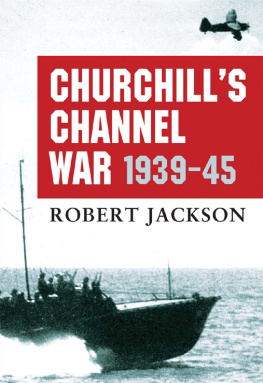ASSAULT
FROM THE SKY
ASSAULT
FROM THE SKY
The History of Airborne Warfare 19391980s
J OHN W EEKS
Contents
I NTRODUCTION
Airborne warfare has caught the popular imagination since the first German parachute troops carried out their daring and alarming invasions in early 1940. The airborne assault is fast, spectacular, dynamic and unpredictable. It dominated the thinking of the Allies in the difficult and dangerous days at the beginning of World War II when a German invasion from the air was foreseen at any moment in Britain and the wholesale advances of the Wehrmacht in Scandinavia and the Low Countries were almost daily expected to be repeated in Britain. The swift and shattering fall of Crete seemed to confirm the infallibility of the airborne method of making war, and it accelerated the Allied efforts to raise similar forces.
From then on the tide turned against the Germans and resulted in the massive and overwhelming might of the First Allied Airborne Army which spearheaded the Normandy invasion and the advance into Germany. Parachute troops became a fixture in Western forces, though they have now been equalled, if not overtaken in numbers and variety by those of the USSR.
This book sets out to give as comprehensive a picture of the background to airborne forces as is possible within the limitations imposed by the space available. Technicalities have been eschewed and the intention is to give a full and rounded picture of what is a modern and innovative method of warfare. The greatest centre of interest is of course World War II, and it is no accident that the greater part of the book is devoted to the rise of airborne forces during that war. We shall never see again the thousands of aircraft of all types which filled the skies for the D-Day invasion, or Arnhem, or the Rhine Crossing. The last military glider flew over a quarter of a century ago, and none will ever fly again. The entire scope and size of airborne warfare has changed to something quite different today; the helicopter carries men and their equipment right to their objective and lands them on it without the necessity of having to drop by parachute or fly in a glider. Guns and vehicles, when not carried inside aircraft, are nowadays lifted underneath a helicopter with no more preparation than hitching them on a sling. However, 30 years ago a similar load could only be carried in a glider which made a one-way journey at great cost.
There are enough publications and films which deal with the glamorous battles and the large campaigns. These battles and campaigns have their place in the whole story and all of them will be found within these pages, but each is treated as a part of the overall development of airborne warfare, and so the reader will find that the ground fighting which followed each operation is not closely examined unless it was affected by the air plans. Where this happened, and Arnhem is an outstanding example, then it is chronicled. Many small raids have been omitted, not because they were unimportant in themselves, but either because they added little to the actual method of airborne warfare, or for reasons of space. To have recorded every single use of airborne troops would have meant several volumes and much boring repetition of similar actions.
Probably the most interesting feature of airborne warfare is the difficulty which some generals had in understanding how they could and should use their airborne troops. In Germany, General Student had from the very start a clear and precise vision of the way in which his highly mobile forces should be employed, though he tended to overstretch himself at first. His superiors, however, either could not or would not fully support him; and when he showed how successful his ideas could be he became the object of jealousy and intrigue. The Allies took their lead from the Germans and tried to use the same surprise techniques against the men who had invented them; they found it more difficult than they had planned. The answer was found to lie in using overwhelming numbers and the campaigns from D-Day onwards are really exercises in the use of an airborne sledge-hammer. Subtlety reappeared with the French in Indo-China where the virtues of economy and surprise were once again shown to be more valuable than overwhelming numbers. The Suez operation was a humiliating example of the lack of progress in Britain since 1945, though again the French were able to show that they had learned the essentials of the airborne method and had the wit and daring to use that knowledge.
After the French came the American Army in Vietnam and the use of the helicopter. The story of the war in Vietnam can conveniently be looked upon as the story of the helicopter in modern warfare and it is due to that unpopular and expensive campaign that helicopters and their tactical use have reached their present stage of development. There is still more to come, but it will come more slowly now.
Finally we look at the immediate future, for all that has happened is only the prologue.
Chapter 1
E ARLY D EVELOPMENTS
It seems a sad reflection on mans inability to live at peace that within 20 years of the first balloon flight being made someone was already thinking of using them to carry soldiers and invade a neighbour. When Napoleon was massing his invasion barges at Boulogne it was quite seriously suggested that he could use balloons to carry his assault troops, or at least part of them, across the Channel. One idea was for 2,500 balloons each carrying four men to be launched before the sea invasion, and to land in England a few hours in advance of the main body and cause confusion, if not complete surrender. Another and more fanciful notion was for the construction of an airborne fort, but the exponent of that idea had not done his sums, whereas the four-man balloon idea was certainly just feasible even if, as we now know, it could not have failed to be anything other than a disaster for all concerned.
After this episode the idea of airborne troop carrying passed out of fashion until 1918 when the aeroplane had reached the stage of development where it could carry reasonable loads in safety and with acceptable standards of reliability. General Billy Mitchell, the maverick of the American Army, drew up a plan for lifting part of the American 1st Division over the German lines and parachuting them several miles behind the Metz sector. For this operation he intended to use the only large aeroplane available to the Allies, the Handley-Page bomber, and he would have required just about the entire bomber force. Planning reached an advanced stage for the campaign of 1919, but General John Pershing vetoed the idea even before the Armistice ruled it out. Pershing was probably right; air operations were too little understood for there to have been any better than a very slim hope of success; for one thing it is apparent that Mitchell had no idea of the training needed for parachute troops, nor indeed could he have had, for it had never been done before and with the primitive radios of that time co-operation between air and ground forces would have been slight. But like Napoleon, Mitchell had the right idea. He wanted to take his troops over the enemy defences in order to attack an objective that could not be reached in any other way. The object of airborne forces remains the same today. They are forces which can take advantage of a particular line of approach to put themselves in an advantageous position from which they can influence the battle or strike a blow at a vital part of the enemy defences.
















